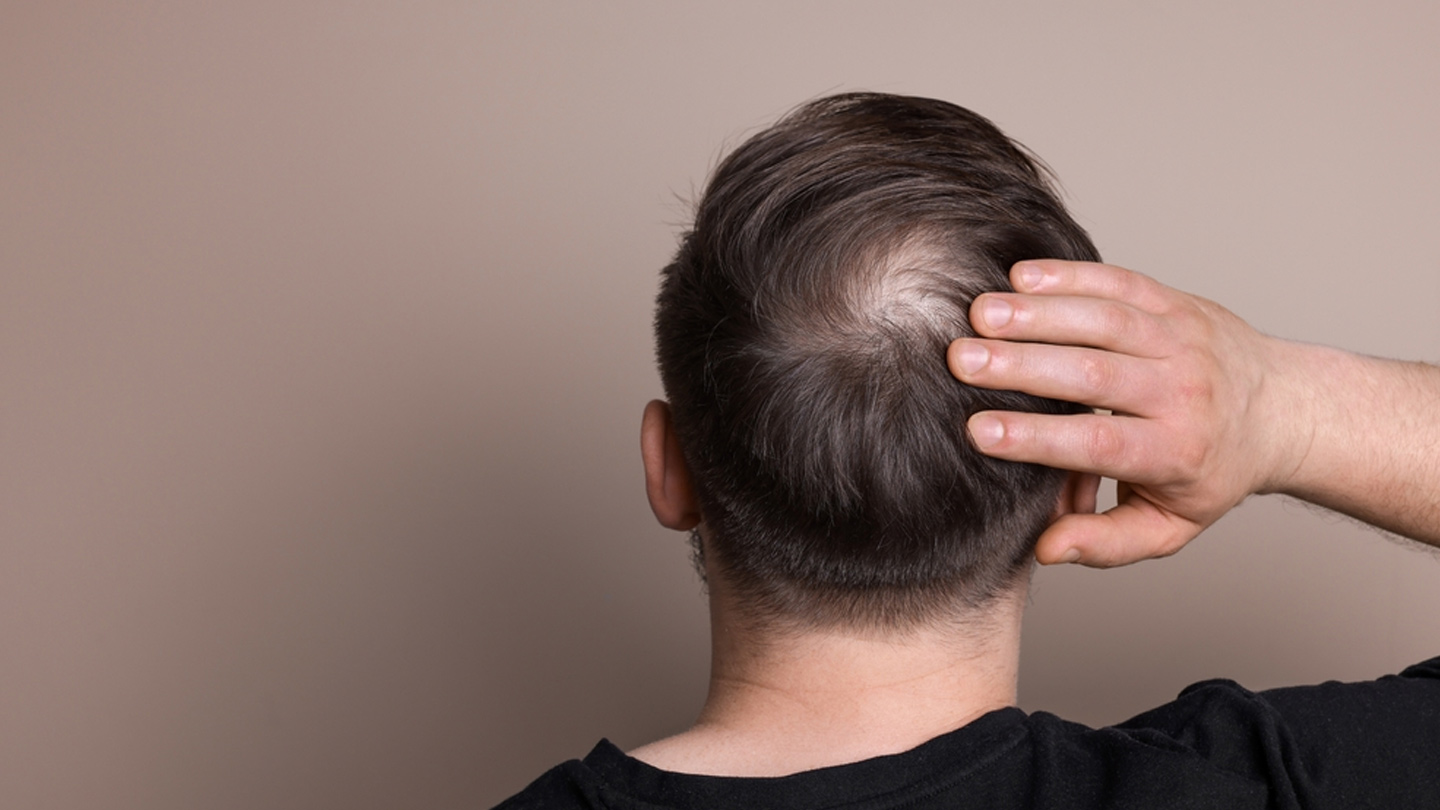Medical
The Medical Gaslighting of Endometriosis
The silent suffering from endometriosis is so common that many women spend their lives in agonising pain without a diagnosis. The disorder affects day-to-day life, one’s mental health and is severely debilitating, yet complaints about its symptoms are met with apathy. Here’s everything you need to know about endometriosis.

Lena Dunham, creator and star of the show Girls had eight surgeries and a hysterectomy at 31; Padma Lakshmi, author, host, model, waited 23 years for a diagnosis; Halsey, singer, had a miscarriage at 20 before she was diagnosed with endometriosis. The Endometriosis Society of India estimates that 25 million women in India may be suffering from this condition. These numbers may be much higher if you consider the cases that go undiagnosed and the time it takes to make a conclusive diagnosis from the time symptoms first appear.
Living with excruciating pain that no one seems to take seriously is a stark reality for 190 million individuals worldwide who suffer from endometriosis, a chronic gyanecological disorder. It causes severe pain that can occur suddenly and grows in intensity. It usually peaks around periods, during sexual intercourse, while passing a bowel movement and/or urinating. It can cripple a person’s lifestyle to the extent that many patients cancel plans or fear making future commitments.
Constant pelvic pain, irregular bleeding, bloating, fatigue and a slew of mental health concerns like depression, anxiety are other symptoms of endometriosis. It is a condition that aggravates with chronic stress. Severe menstrual pain from endometriosis is often disregarded by family, friends and doctor’s alike. “I used to think that I have a low pain threshold,” says Vasudha Rai, a New Delhi-based beauty and wellness journalist and author, who has stage IV endometriosis and has had five rounds of IVF and five surgeries, including a hysterectomy.
So what is endometriosis?
Endometrium is tissue that lines the uterus. Sometimes this tissue starts growing outside the uterus on ovaries, vagina, pelvic area including the bowel and rectum. Each menstrual cycle, as the body preps for a possible pregnancy, this tissue continues to grow. In the absence of a pregnancy, the body sheds the thickened lining of the uterus and a period occurs. However, the tissue that grows outside the uterus has no way to exit the body. It sits on the ovaries or in the pelvic area, growing each menstrual cycle.
The impact of this disorder extends far beyond extreme period pain—studies have shown that the extent of endometriosis impacts an individual’s ability to get pregnant and carry a pregnancy to term—it impacts fertility and can cause infertility.
Endometriosis is referred to as a silent epidemic, primarily because women’s pain is often disregarded or minimised—often labeled hysteria, hypochondria or even a call for attention. It is isolating to undergo a traumatic experience, month after month, with no one willing to acknowledge the issue, let alone offer support. “I’ve faced insensitivity from the doctors who thought I was exaggerating my pain. I had to force my old gyno to take my ultrasound, which revealed a tennis ball-sized cyst and I was taken in for emergency surgery. The same doctor refused to take my call days after I got fever after my hysterectomy,” writes Rai on a Reddit thread that she recently started for other women to start a conversation on endometriosis.
How is endometriosis diagnosed and treated?
The toughest challenge is to find a doctor who will not disregard the extent of your discomfort. Scroll through Rai’s Instagram feed and you’ll find comments where women have shared their experience of medical gaslighting. Some doctors have dismissed agonising pain as a ‘sign of fertility’ or diminished the patient’s suffering by suggesting that it will ‘self-correct’ after childbirth.
“When adolescent girls complain of extreme period pain that is progressive and gets worse each cycle, quite often they get treated for an infection. In this case, a physical examination is a must. Normally, it doesn’t hurt much but for those with endometriosis, a physical examination can be quite painful,” says Dr Anuradha Panda, consultant OBGyn, laparoscopic and robotic surgeon, Apollo Hospital, Hyderabad. It is a gynecologist’s job to ask you leading questions to suss out other endometriosis symptoms, adds Panda. For instance, asking about irregular bleeding, pain in other areas, pain during sex, and intensity of period flow. Unfortunately, endometriosis is often diagnosed around the time a woman approaches a doctor for fertility issues.
To confirm a diagnosis, ultrasounds are suggested. However, it’s important to keep in mind that a clear scan doesn’t rule out a diagnosis of endometriosis. If repeat scans fail to show the presence of endometriosis, an MRI is recommended. “But the gold standard for endo is laparoscopy—a minimally invasive surgery that allows us to examine the tissue and treat the condition. Endometriosis can present in many ways, therefore a well-trained eye is essential to spot it,” says Panda. CA125 marker blood test is also suggested for some individuals. “Though this is a cancer marker, it is mildly elevated in patients with endometriosis,” says Panda.
The treatment for endometriosis comprises pain medications, hormone therapy, surgery to remove tissue growth, hysterectomy and removal of ovaries and fertility treatment for those looking to conceive. Many patients suffering from this disorder feel that emotional and psychological support to deal with the ramification of endo should be included in patient care.
“Initially I felt alone. No one tells you that this will stay with you for life. It is pretty powerful to hear from other women suffering from endo. By starting a conversation among other women, I hope someone else who is feeling alone will find the support she needs,” says Rai about her subreddit /r/endometriosisindia. The condition trails the patient almost like a shadow. Rai has had to cancel yoga retreats, plans with friends and other commitments because of the debilitating effects of endometriosis, which often warrants a visit to a clinic.
Lifestyle changes to cope with endometriosis
Check your nutritional intake: As per a study in the journal Human Reproduction the risk of developing endometriosis increases for those who had a high intake of red meat. However, a significant reduction in the risk for endometriosis was observed in those who consumed a diet rich in fruit and vegetables. The study also found, “Consumption of milk, liver, carrots, cheese, fish and whole-grain foods, as well as coffee and alcohol consumption, were not significantly related to endometriosis.”
Get active: Physical exercise, be it high intensity or low intensity, can help improve blood circulation, boost endorphins (feel-good chemicals) and help manage stress. Try yoga to ease the pain. A study titled A Qualitative Study on the Practice of Yoga for Women with Pain-Associated Endometriosis found that “yoga was beneficial to control pelvic pain”.
Try Acupuncture: A meta-analysis in the Journal of Pain, found that acupuncture was effective in the treatment of chronic pain.
Self-care: “Speak to anyone with this condition and they will tell you that it becomes worse during stressful times of your life,” says Rai. Clinical studies indicate that endometriosis is linked to chronic stress. So practice self-care, take time off to de-stress and recuperate.
Consider these tips the next time you visit a doctor to sidestep medical gaslighting.
EXPLORE MORE
A sprain isn’t “just a sprain.” Here’s what your ankles wish you knew.
Your body whispers before it screams. Here are the early heart disease warning signs most people overlook until it’s too late.
Baldness isn’t just about ageing; it’s a complex condition influenced by biology, habits, and health. Understanding it is the first step toward managing it.
Breast cancer before 40 is rare, but not impossible. Know these warning signs so you can spot them well in time.







.jpg)


